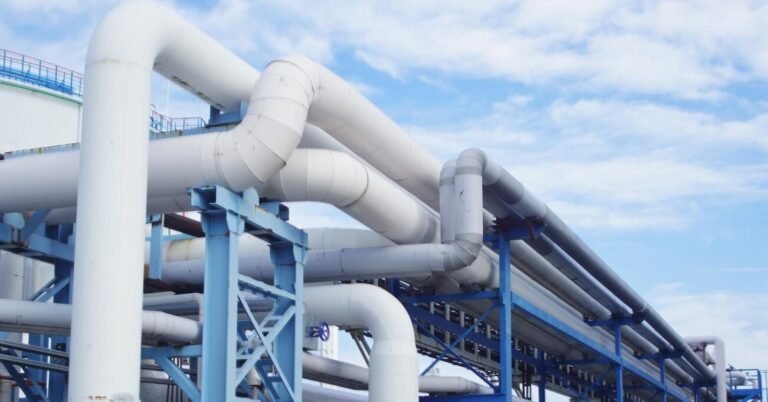Table of Contents
- Introduction to Pigging
- Preventing Corrosion Through Pigging
- Enhancing Safety with Regular Pigging
- Different Types of Pipeline Pigs
- Benefits of Pigging
- Challenges and Solutions in Pigging
- Future Trends in Pipeline Maintenance
- Final Thoughts
Introduction to Pigging
In the vast world of pipeline management, pigging stands out as a critical process integral to maintaining the integrity and efficiency of pipeline systems. This process involves sending devices called ‘pigs’ through the pipelines, which is vital in ensuring our pipeline infrastructure’s cleanliness and operational effectiveness. Industries such as oil and gas, water treatment, and chemical production rely heavily on the effectiveness of natural gas pigging to prevent costly damages and dangerous situations. Pigging is more than just a maintenance task; it’s a comprehensive strategy that involves various devices performing specific roles, such as cleaning, inspection, and separating different substances within the pipeline. This ensures a streamlined flow, effectively reducing the risk of clogs and potential buildup that could lead to significant technical and financial issues. The widespread adoption of pigging highlights its importance as a preventive measure, aligning with the industry’s commitment to safety and sustainability.
Preventing Corrosion Through Pigging
Pipelines are constantly at risk of corrosion due to numerous internal and external factors, which may significantly impact their structural integrity over time. Corrosion can result from various substances transported through pipelines and environmental conditions. Addressing this potential risk means routinely engaging in corrosion prevention and management practices, among which pigging is a particularly effective strategy. Pigging directly combats corrosion by methodically removing residues and deposits that accumulate inside pipelines. If left unchecked, these deposits can act as catalysts for corrosive processes that may weaken pipeline walls, leading to leakages and, eventually, catastrophic failures. Industries reduce these risks by employing pigging strategies such as brushes, scrapers, and magnetic pigs, prolonging their pipeline systems’ life and maintaining operational integrity. Implementing effective corrosion control can save billions of dollars annually worldwide in potential damages and maintenance costs.
Enhancing Safety with Regular Pigging
Any industry utilizing pipelines must prioritize personnel and environmental safety. With the pressing need to minimize accidents and safeguard natural resources, implementing regular pigging operations is a significant step toward achieving these goals. Safety measures integrated with pigging ensure that pipelines remain obstruction-free, mitigating the chances of pressure buildup, rupture, and leakages that could endanger human and ecological habitats.
Furthermore, regular pigging augments pipeline operational reliability by maintaining an optimal flow of materials. Industries can achieve greater productivity and financial performance by diminishing the probability of unplanned operational halts. The undeniable link between regular pigging and enhanced operational safety thus reinforces its role as an indispensable practice within pipeline maintenance regimes.
Different Types of Pipeline Pigs
Pipeline operations require different types of pigs, each designed to tackle specific maintenance needs. Cleaning pigs, for instance, are equipped with brushes or scrapers that effectively remove debris and buildup, ensuring the internal surface of the pipeline remains free of obstructions. On the other hand, inspection pigs are sophisticated devices equipped with sensors and tools capable of gathering valuable data regarding the pipeline’s state, such as detecting corrosion, dents, and other potential flaws. Sealing pigs, essential for hydrostatic testing, ensure airtight integrity by isolating sections of pipelines and facilitating pressure tests to confirm the absence of leaks. The significance of choosing the right pig cannot be overstated, as the wrong choice could lead to inefficient cleaning, compromised inspections, or even damage to the pipeline. As a result, thorough consideration must be given to the pipeline’s specific needs when selecting the appropriate pig attributes and specifications.
Benefits of Pigging
- Improves pipeline efficiency by reducing friction and energy expenditure.
- Diminishes the likelihood of leaks and ruptures, thus minimizing environmental impact.
- Reduces maintenance costs by preemptively addressing issues before they necessitate costly repairs.
- Prolongs the operational lifespan of pipelines, protecting infrastructure investments and natural resources.
Pigging transcends a mere maintenance activity, embodying a proactive commitment to pipeline management’s economic, operational, and environmental aspects. Industries leveraging pigging stand to benefit immensely from a sustainable approach toward their infrastructure management strategies.
Challenges and Solutions in Pigging
The implementation of pigging in pipeline maintenance is not without its challenges. These challenges include ensuring precise pig fitting across varying pipeline diameters, navigating complex pipeline architectures, and operating in high-pressure environments. However, continuous technological advancements are incrementally addressing these challenges. Notably, innovations in pipeline intervention technologies have made strides in developing adaptive pigging solutions tailored to enhance operational efficacy and ease. Emerging solutions include innovative pigging technologies offering comprehensive, real-time data collection, versatile pig designs with adjustable features for varying pipeline dimensions, and pig launching and receiving process automation. Addressing these challenges ensures that pigging remains an indispensable component of an effective pipeline management strategy.
Future Trends in Pipeline Maintenance
As we move into the future of pipeline maintenance, there is a clear trend toward incorporating advanced technologies and automation systems that enhance efficiency and safety. Robotics and IoT devices are instrumental in transforming pigging into a more precise and autonomous process. These technologies are expected to lead the shift towards less labor-intensive maintenance, enabling immediate response mechanisms and predictive analytics that allow for timely interventions before issues escalate. Such advancements promise significant benefits, such as reducing environmental impact, preserving energy resources, and reducing operational overhead costs. Driven by these technological innovations in pigging and other maintenance operations, the industry is poised to shift toward more sustainable and environmentally responsible practices.
Final Thoughts
Pigging ensures pipeline systems’ safety, reliability, and efficiency. Its contributions to corrosion prevention and hazard mitigation make it a cornerstone of proactive pipeline management strategies. As technologies evolve, pigging processes will continue adapting, providing even greater value and protection for industries relying on pipelines for their operations. Pigging will remain a vital practice with a focus on innovation and sustainability. By preparing for the future through continued technological adoption, industries will enhance their pipeline maintenance strategies and ensure a safer, more sustainable operational landscape.

